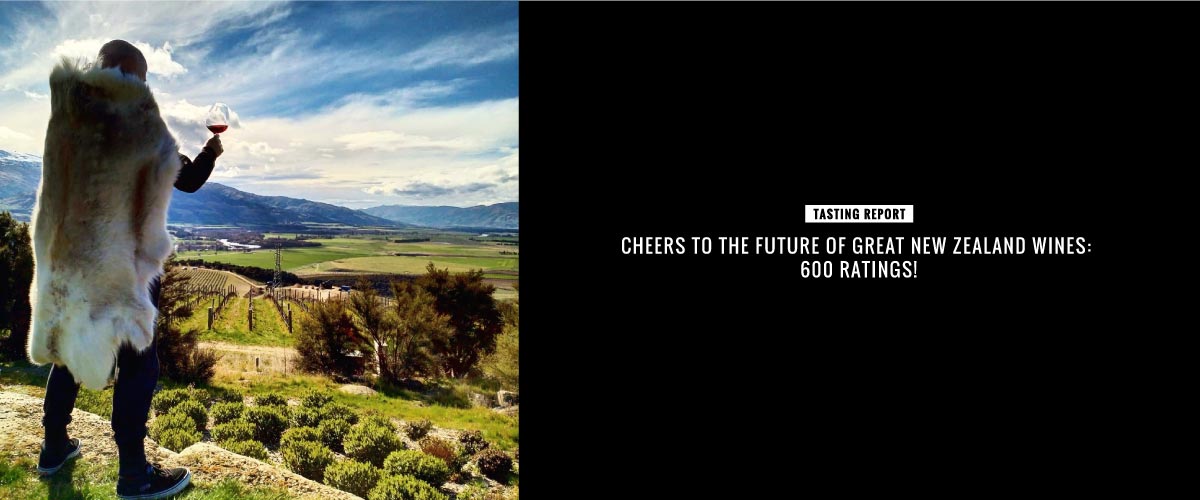
This year, I set up base camp in Central Otago for the annual JamesSuckling.com New Zealand tasting and collected more than 600 wines from across the country for our biggest New Zealand report to date. I left last year’s tasting in Martinborough with a sense that this was a wine-growing nation in a phase of determined refinement and consolidation of wine styles. The impression from this year’s tasting is that this continues to play out and many producers are in a reflective mode. Great wines will come from all this. I am sure of it.
Regardless, New Zealand continues to sell a lot of wine as it posted its 23rd consecutive year of export growth for the year ending June 30, 2018 and achieved a return of NZ$1.7 billion for just more than 255 million liters of wine exported.
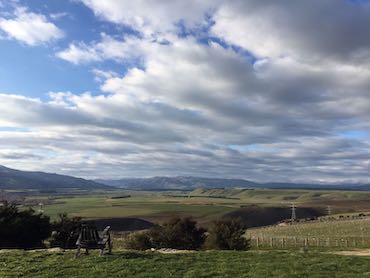
This year, we set up base camp in Central Otago for the annual JamesSuckling.com New Zealand tasting.
In production terms, sauvignon blanc still represents a staggering 73 percent of the total and the Marlborough region represents more than 77 percent of the country’s production. There’s a lingering sense of the need to consolidate and harness the considerable success of the Marlborough sauvignon blanc category, but there’s also a latent desire to promote the offerings of a more diverse set of wine styles produced in much smaller volume.
You have to ask yourself if sauvignon blanc is simply too successful to allow this message of other types and styles of wines? Casting an eye across the last ten years of national vineyard data, it is hard to see the balance changing anytime soon. Sauvignon blanc plantings have averaged an annual growth of around 1,000 hectares, whereas plantings of pinot noir, the second most widely planted variety in New Zealand, have grown by only 100 hectares a year. The average grape yield across New Zealand sits at a whooping 11 tons per hectare, a statistic that is heavily driven by the scale and farming style of sauvignon blanc in Marlborough where yields can regularly exceed 15 tons per hectare. Pinot noir yields would be around five to seven tons by comparison.
But whilst these numbers say much about the global footprint of New Zealand wine, the perception of New Zealand wine varies dramatically across a wide range of consumer tastes. Its fame continues for the majority of wine drinkers as a source of overt, inexpensive and uncomplicated tropical fruit-flavored sauvignon blanc. More deeply involved wine consumers see New Zealand as one of the most exciting sources of pinot noir in the Southern Hemisphere. Yet there is so much more than that.
Whilst this year’s tasting was all-encompassing, the quality and breadth of the pinot noir offering was undoubtedly the highlight. With more than 200 New Zealand pinot noir wines reviewed, this important category offers much for fans of pinot. The baseline quality of New Zealand pinot noir continues to rise and producers both small and large are delivering wines with pristine fruit character, freshness, distinction and energy.
Renowned Central Otago pinot producer Felton Road showed a strong pinot noir offering from the cooler 2017 vintage led by their Block 3 bottling, which is a beautifully carved expression of powerful, layered pinot noir. On the whole, 2017 Central Otago pinot noir benefited from a cool winter and spring with good rainfall. Lower crops delivered high quality thanks to very mild, sustained ripening in March. These wines boast both concentration and definition.
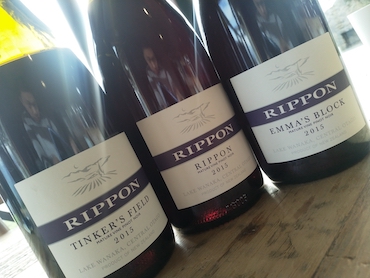
Rippon Tinker’s Field Pinot Noir 2015 takes the spot of top pinot noir this year.
But it is the entrancingly complex and detailed Rippon Tinker’s Field Pinot Noir 2015, sourced from their schist-laden Wanaka site this warmer vintage, that takes the spot of top pinot noir in this year’s report. This wine possesses the kind of depth and layering that is rarely seen outside the best Burgundian Grand Crus.
Yoshiaki Sato’s Pinot Noir l’Insolite 2016 is a profoundly focused wine, even though it is a natural wine, delivering a strikingly pure account of Central Otago pinot noir. This is an exciting wine for the region. Rudi Bauer has added the Franz Ferdinand Pinot Noir 2015 to his Quartz Reef repertoire, a style that is steered into more elegant territory to good effect. I like this lighter touch at Quartz Reef.
Also from 2015, Prophet’s Rock has debuted a new wine of some note. The Prophet’s Rock Pinot Noir Cuvée Aux Antipodes 2015 is a collaborative project with esteemed Burgundian winemaker François Millet and adds yet another layer of respected outsider influence to the Central Otago pinot noir landscape.
The fine, yet stoic and savory style of this debut 2015 vintage is certainly characteristic of Millet’s touch as seen in the wines he makes at Domaine Comte Georges de Vogüé in Chambolle-Musigny. The follow-up 2016 release is also reviewed here, and it really impressed with its graceful, seamless and fluid style.
Two Paddocks has sailed into a deep purple patch with an outstanding trio of 2016 single-vineyard pinot noir releases (The First Paddock, The Last Chance and The Fusilier). The multi-parcel blend Two Paddocks Pinot Noir 2017 is also of exceptional quality and a preview tasting of the 2017 single-vineyard wines reveals much for pinot lovers to look forward to. We bring you the first reviews of these exceptional 2017 single-vineyard wines, due to be released in May 2019.
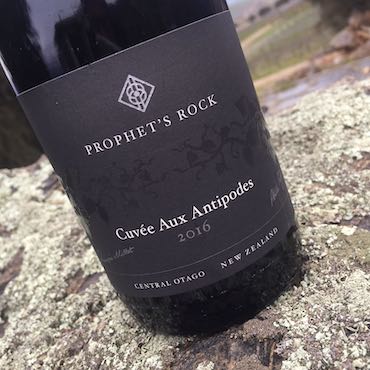
Prophet’s Rock Pinot Noir Cuvée Aux Antipodes is a collaborative project with esteemed Burgundian winemaker François Millet.
A pair of very convincing pinots from Martinborough also feature strongly with Escarpment backing up their stellar Kupe Pinot Noir 2015 with a refined and athletic Kupe 2016 release. Ata Rangi’s smaller production McCrone Vineyard Pinot Noir 2015 is a dense, detailed and handsomely resolved Martinborough pinot that plays itself as an iron fist in a velvet glove. It further reinforces the prowess of the showy yet structured 2015 vintage for Martinborough pinot noir.
Tucked out in Waikari, micro-estate Bell Hill continues to deliver impressive, interest-packed pinot alongside a very strong showing from the Waipara. The likes of Pyramid Valley, Black Estate, Muddy Water, Greystone, Tongue in Groove and Pegasus Bay are all represented in this year’s report and all achieved strong ratings for pinot noirs from the 2015, 2016 and 2017 vintages.
Marlborough’s pinot noir offering is a strong one lead by Fromm and Giesen, both delivering structured, powerful wines from the famous Clayvin Vineyard. Te Whare Ra, Framingham, Zephyr and Saint Clair all performed strongly in the pinot noir tastings, as did Nautilus, the dry-grown Folium, Clos Henri and Spy Valley.
Value is certainly here for the taking, too. Wines such as the delicious Ata Rangi Crimson 2017, Mt. Difficulty Roaring Meg 2017, Two Paddocks Picnic Pinot Noir 2017 and Akarua Rua 2017 all manage to deliver fresh, fruit-driven style with good length and plenty of concentration and drinkability for the money.
I don’t want to forget to mention some chardonnays, even though pinot noir stands firm in my mind after our tastings. Chardonnay styles are as diverse as you would expect when grown across a wide range of regions in New Zealand, although style seems to currently be driven by winemaker preference ahead of terroir-driven influence. Where many other wine styles are being drawn towards a point of restraint and finesse, chardonnay is still being played into a flamboyantly rich, unctuous style in many cases.
Acidity is the trump card here (as it is for much of New Zealand’s white wine), and the ability to deliver everything from zesty, crisply fruited styles to enriched buttery aromas and flavors is underpinned by the ability of most wines to strike a fresh resolve.
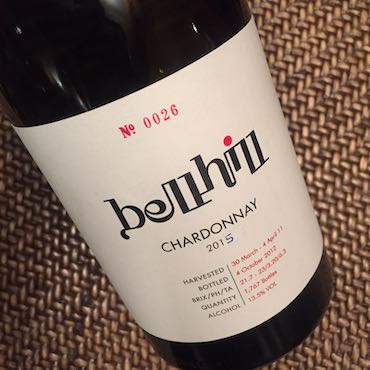
Bell Hill delivers their exceptional chardonnay via a combination of high-density plantings, active limestone terroir and very low yields.
For example, Bell Hill delivers their exceptional chardonnay via a combination of high-density plantings, active limestone terroir and very low yields. Pegasus Bay relies on vine age and concentration to a carry supremely textural style and Marlborough legends Dog Point and Greywacke play a polished stylistic game to deliver a very complex style, year in, year out.
Neudorf continues to be one of the most consistent sources of structured, focused and powerful New Zealand chardonnay with their Moutere 2017. Kumeu River’s suite of 2017 chardonnays is strong with Hunting Hill, Coddington and Mate’s Vineyard all performing to style and hitting a high watermark of quality in a year that had its challenges for their northerly location.
In Central Otago, Mt. Difficulty, Mount Edward and Felton Road all deliver wines with tension, depth and freshness. The Hawke’s Bay offerings of Clearview play into the richer end of the spectrum, whilst the chardonnays of Craggy Range deliver measured complexity. Smith & Sheth and Bilancia are two producers who walk the line of reductive flintiness with precision and agility in their chardonnay wines.
The red wines of Hawke’s Bay should not be forgotten among the great pinot and chardonnays tasted this year, and the polished tannins and deeply concentrated fruit characters run through cabernet sauvignon, merlot, cabernet franc and syrah wines. Bilancia’s Syrah La Collina 2016 is supremely detailed, elegant and concentrated and very long. In the Bordeaux-style reds, there’s a litany of elegant, suave and flavor-soaked wines from Esk Valley, Craggy Range, Vidal, Church Road, Smith & Sheth, Alpha Domus and Clearview.
Riesling shows consistent quality in off-dry mode from Central Otago, Waipara, Nelson and Marlborough — look to Framingham, Maude, Felton Road, Rippon, Black Estate, Pegasus Bay and Neudorf. There’s also a rising tide of young, fresh and exciting white blends that compare very favorably against more predictable and stylistically similar offerings of varietal sauvignon blanc and pinot gris.
I am so enthusiastic about the future of New Zealand wines after my tastings this year for JamesSuckling.com. New Zealand’s search to evolve and discover new stylistic refinements and possibilities in wine continues at a quick pace. Greater interest, diversity and consistency of style in wine are the results. This is an exciting proposition for New Zealand wine that will play out elegantly in the next few years. And I look forward to following the progress in future tastings. Nick Stock, Contributing Editor

